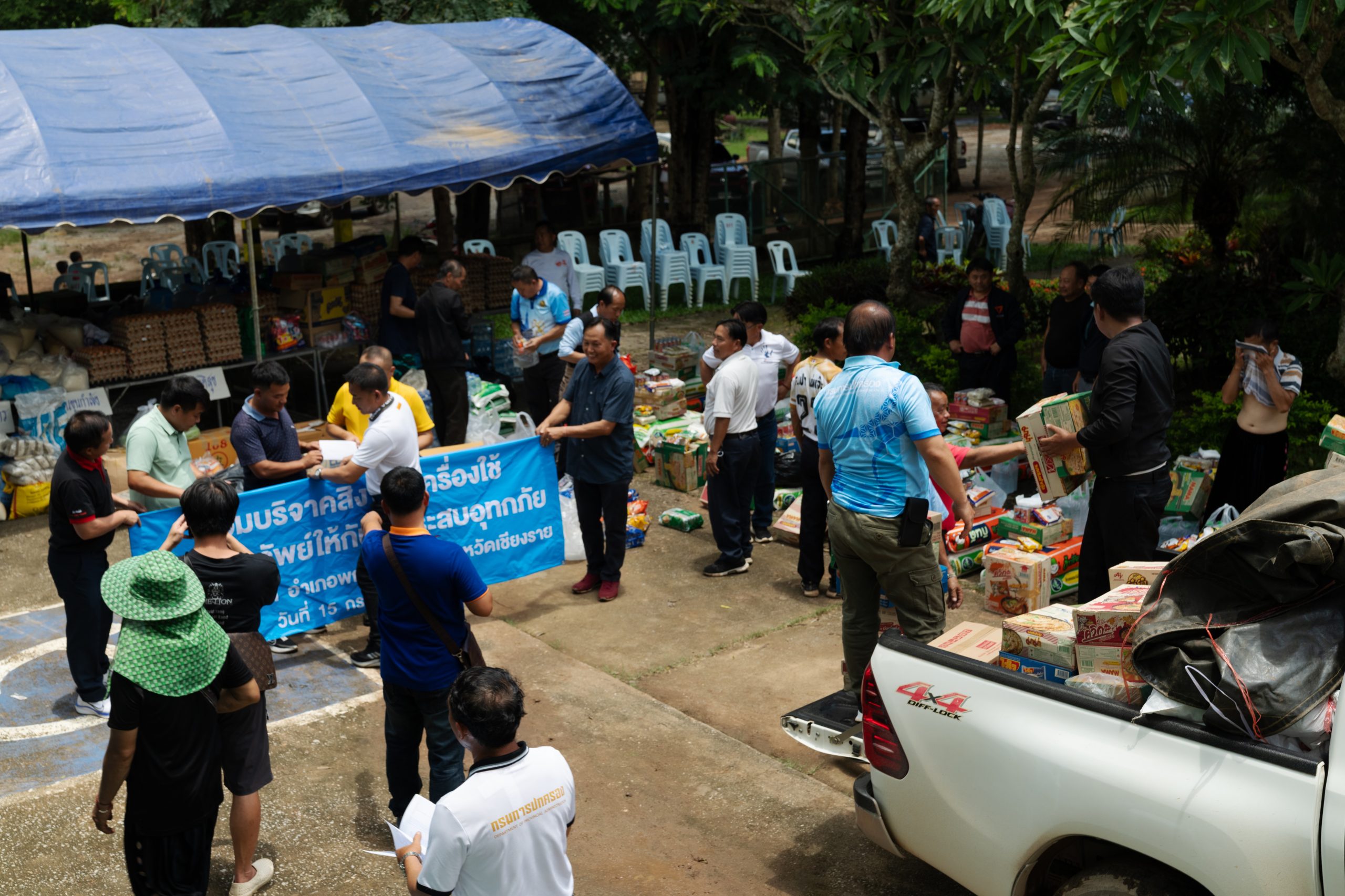Ban Mae Pao, Chiang Rai – July 16, 2025. In the aftermath of a devastating flash flood on June 26, the Hmong community from across Northern Thailand gathered in solidarity to support the villagers of Ban Mae Pao in Phaya Mengrai District, Chiang Rai Province. The natural disaster, described by locals as a “flood bomb,” destroyed 26 homes and severely impacted the entire village.
In late June 2025, days of relentless rainfall triggered severe flash floods across Chiang Rai province, inundating five districts, ten sub-districts, and 32 villages. Over 4,400 households were affected, with roads submerged, health facilities damaged, and more than 500 rai (approximately 200 hectares) of rice fields destroyed. Among the hardest-hit areas was the Mae Pao sub-district in Phaya Mengrai, where surging floodwaters from the surrounding highlands swept through Moo 1, 2, 3, 6, 11, 12, 14, and 16, affecting 3,705 households. The Mae Pao health center was also impacted, and several roads became impassable.
On July 16, Ban Mae Pao became the center of a heartfelt relief effort led by Hmong communities from across Northern Thailand. In response to the June 26 flood that devastated the village and destroyed 26 houses, delegations from Chiang Mai, Chiang Rai, Wiang Kaen, Nan, and several other provinces came together for a large-scale food donation campaign. Instead of monetary contributions—which often require complex administrative processing or approval from several channels—the Hmong Association and its networks prioritized direct, immediate support. Food donations such as rice, dry goods, and fresh produce were gathered quickly and delivered straight to the community, ensuring timely assistance without systematic delays.
“This is how we support one another,” said Ball, a volunteer from the Mae Sa Mai Hmong community in Chiang Mai. “We may not always have access to financial donations, but we can always share what we have. Food is essential—and it gets to people without delay.”
Ball made the long drive from Chiang Mai with his family, not just to deliver supplies, but to stand in solidarity with the community of Ban Mae Pao. Their presence, alongside many others, turned the event into more than just a relief mission—it became a powerful expression of collective care, resilience, and unity. Ball also shared that the village has arranged temporary accommodations for families displaced by the flood. While it’s not a case of individual households opening their homes, the community collectively made use of the available lowland areas to house those affected. While the land used for these shelters is technically government-owned, local residents explained that the community has long been allowed to use it with a degree of informal freedom. This arrangement has enabled the village to quickly respond in times of crisis, organizing space, resources, and support in a way that reflects both cultural solidarity and practical necessity. Still, the situation raises important questions about land rights and long-term security for displaced families.
Among the visitors was Chak Kinessee, a bird researcher and volunteer at the Mekong School, who praised the strong social fabric and rapid mobilization among Hmong communities. “This kind of grassroots solidarity is powerful. Responding quickly with food and support is essential,” he said.
Yet Chak emphasized the need to look beyond immediate relief. “We often ask what is happening—floods, landslides, destruction—but the more urgent question is why,” he noted. “These events are not random. They’re symptoms of deeper, systemic issues—climate vulnerability, deforestation, and unsustainable land use. If we don’t invest in understanding and addressing those root causes, we’ll always be reacting instead of preparing.”
The gathering at Ban Mae Pao stood as a powerful testament to Hmong collective care—a moving display of how communities come together in times of crisis. Volunteers drove long hours from provinces like Chiang Mai, Nan, or Phayao, bringing not just food but entire families to support the effort. The choice to donate food rather than money reflects both a deep-rooted cultural tradition of sharing essentials and a practical response to challenges with fundraising, bureaucracy, and trust in formal aid systems. Still, this kind of effort requires immense coordination, time, and human resources, raising important questions about how support mechanisms are structured. Beyond the generosity and solidarity, the event was also a sobering reminder of the mounting environmental challenges ahead and the urgent need to address their root causes, while rethinking how communities can be more sustainably supported when disaster strikes.


